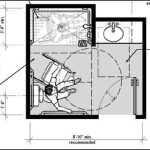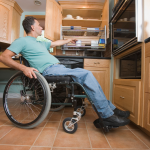Being a caregiver for an aging family member at home can be fraught with competing decisions. Caregivers must balance their day-to-day life with preparation for an uncertain future – all while their loved one endures symptoms and large life changes of their own.
But caring for a person with Parkinson’s Disease (PD) can be especially overwhelming because of its long-term, progressive nature. You might anticipate physical changes, but the long-term cognitive changes manifest in ways that are just as visible. The cognitive element can render caregiving even more complex. You need a Parkinson’s disease care plan.
A big part of the plan to manage progressive PD should involve incorporating therapeutic solutions in the home environment. A home tailored to the cognitive changes of each phase can help ease the overwhelm experienced by caregivers.
That’s why we use integrative design to care for the whole person’s cognitive challenges through every phase of the process. Let’s take a look at how you can modify your home to manage the cognitive changes ahead.
Use Well-Tech for Early-Stage Challenges
Upon diagnosis, there are tech solutions that can help with the adjustment period. In fact, “Well-Tech” is an emerging industry with a wide range of tools to help families provide the best care for their loved one.
You’ll be faced with a long list of medications to administer, so medication management is essential. Voice-automated reminders – timed with individual movement needs – ensure your loved one is getting meds when they need them.
Wearable devices that track symptoms can help log the daily ups and downs and provide feedback to health care partners. They also foster independence by giving the person with Parkinson’s the tools needed to be experts on their condition.
Mental overstimulation is painful for people with PD. Thus, you’ll want the ability to dim lights easily. With a simple voice command, a digital assistant (like Amazon’s Echo and Google’s Home) can dim a light connected to a smart plug.
Design Your Space with Impulsivity In Mind
Many people with PD – especially as a side effect of PD medications – tend to experience impulsive behaviors. This is also true when it comes to their mobility. Factor that into your Parkinson’s disease care plan for staying at home:
- Falls are common: Put pressure sensors on their chairs or beds so that the caregiver gets an alert any time the person with PD stands up.
- Smooth out flooring: Carpet is harder for people with PD to navigate, especially when they start using a walker. Consider replacing carpets with something non-slip, not too hard, but durable. Luxury vinyl, laminate, and even hardwood are more optimal for safety and durability.
Consider the entire space: Well-lit (but dimmable) rooms that are uncluttered and organized will help prevent injury and confusion.

Dementia Presents More Complicated Challenges
As part of your Parkinson’s disease care plan, you have to consider dementia. Why? Because more than half of people living with PD will develop dementia, and there are many complications associated with this difficult phase of the disease. Well-tech allows for home automation, which is invaluable as dementia sets in.
Motion sensors can tell a caregiver when the loved one has fallen or opened an exterior door. Home security systems can automatically alert first responders in an emergency. Because dementia can lead to wandering behaviors, wearables with GPS tracking make it easier to locate your loved one should they leave unexpectedly.
As many as 70% of people with Parkinson’s will experience some form of psychosis and hallucinations during the advanced stages of the disease. A calming environment is paramount. Reduce ambient noise to allay confusion and make vision more clear with brighter lighting.
Poor pain management and other associated complications can often lead to a common side effect of PD: depression. Be mindful of your loved one’s mood, and advocate for them if you think they need support to manage their emotional load.
As you consider home modifications for Parkinson’s Disease, factor in these potential mental health complications. Stress makes it harder to navigate Parkinson’s, so focus on creating a home that is conducive to relaxation and recovery.
A therapeutic tub can help with bath time, a task that can sometimes be challenging for you and your loved one with PD. It allows you to integrate aromatherapy, light therapy, and pain management. Consider also installing heated floors in the bathroom and adding towel warmers – all in service of relaxing muscles and making bath time more soothing.
If you can incorporate comfort into every space of your home, you’ll help alleviate stress. Keep rooms temperate, create comfortable spaces, and incorporate aromatherapy. Use smart technology with voice control to stream calming music or nature sounds. Small changes like these make life more pleasant for everyone in the home.







